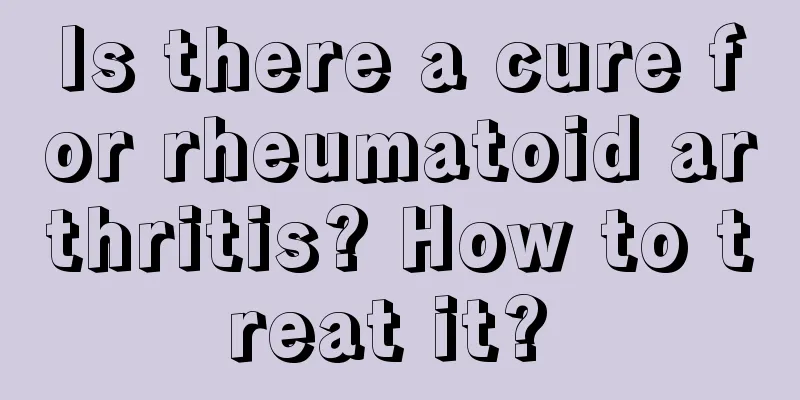Is there a cure for rheumatoid arthritis? How to treat it?

|
Suffering from rheumatoid disease is the biggest worry for middle-aged and elderly people, because the prevalence of this disease is very high, and the onset is slow, the pain is unbearable and makes patients suffer a lot. The treatment of rheumatoid disease is also a relatively long process. Therefore, rheumatoid patients are the last thing middle-aged and elderly people want to see. So, is there a cure for rheumatoid arthritis? How to treat it? 1. Patient education Help patients correctly understand the disease, build up confidence and patience, and cooperate with doctors in treatment. 2. General treatment For those with obvious joint swelling and pain, rest and joint immobilization should be emphasized. After the joint swelling and pain are relieved, attention should be paid to starting functional exercises of the joints as early as possible to relieve stiffness. In addition, auxiliary treatments such as physical therapy and topical medications can quickly relieve joint symptoms. 3. Medication The treatment plan should be individualized, and drug treatment mainly includes non-steroidal anti-inflammatory drugs, slow-acting anti-rheumatic drugs, immunosuppressants, immune and biological preparations, and herbal medicines. (1) Nonsteroidal anti-inflammatory drugs have anti-inflammatory, analgesic and antipyretic effects. They are the most commonly used drugs in the treatment of rheumatoid arthritis and are suitable for patients in all stages, including the active stage. Commonly used drugs include diclofenac, nabumetone, meloxicam, celecoxib, etc. (2) Antirheumatic drugs (DMARDs) are also called second-line drugs or slow-acting antirheumatic drugs. Commonly used ones include methotrexate, taken orally or intravenously; sulfasalazine, starting with a small dose and gradually increasing, as well as hydroxychloroquine, leflunomide, cyclosporine, auranofin, and total glucosides of white paeony. (3) Yunke, i.e. technetium [99Tc] methylene diphosphonate injection, is a non-excited isotope that has a rapid onset of symptom relief in the treatment of rheumatoid arthritis with minimal adverse reactions. Intravenous medication, 10 days as a course of treatment. |
<<: Cold urticaria symptoms, three most common
>>: What are the causes of rheumatoid arthritis
Recommend
Nursing for fatigue and abdominal pain after liver cancer surgery
How to care for fatigue and abdominal pain after ...
What are the early symptoms of lung cancer in children
The chance of children developing lung cancer is ...
What are the symptoms of metabolic syndrome
In life, we often hear that some people suffer fr...
Long-term lack of ejaculation
It is not bad for men to not ejaculate for a long...
The difference between eight-pack abs and six-pack abs
It is said that when judging whether a man has a ...
Diet after bladder cancer surgery
Although bladder cancer is a malignant tumor and ...
What are the benefits of washing your face in the morning and evening
We clean our faces every morning and evening, not...
Does eye thread embedding hurt? What should I pay attention to?
Eye suture implantation can be said to be a kind ...
How to clean oil stains on clothes
Before we figure out how to clean oil stains from...
Dietary considerations for patients with brain cancer and epilepsy
As the disease progresses, brain cancer patients ...
What to do if you have urinary incontinence after surgery
Many elderly people often suffer from urinary inc...
How to treat dry eyes and what to eat
The era of advanced science is also an era of usi...
Can a sexless marriage last a lifetime?
Marriage is what every man and woman in love look...
Can esophageal cancer be cured
Can esophageal cancer be cured? This is a questio...
How to wash clothes with ink
How to wash clothes that are stained with ink? Wh...









